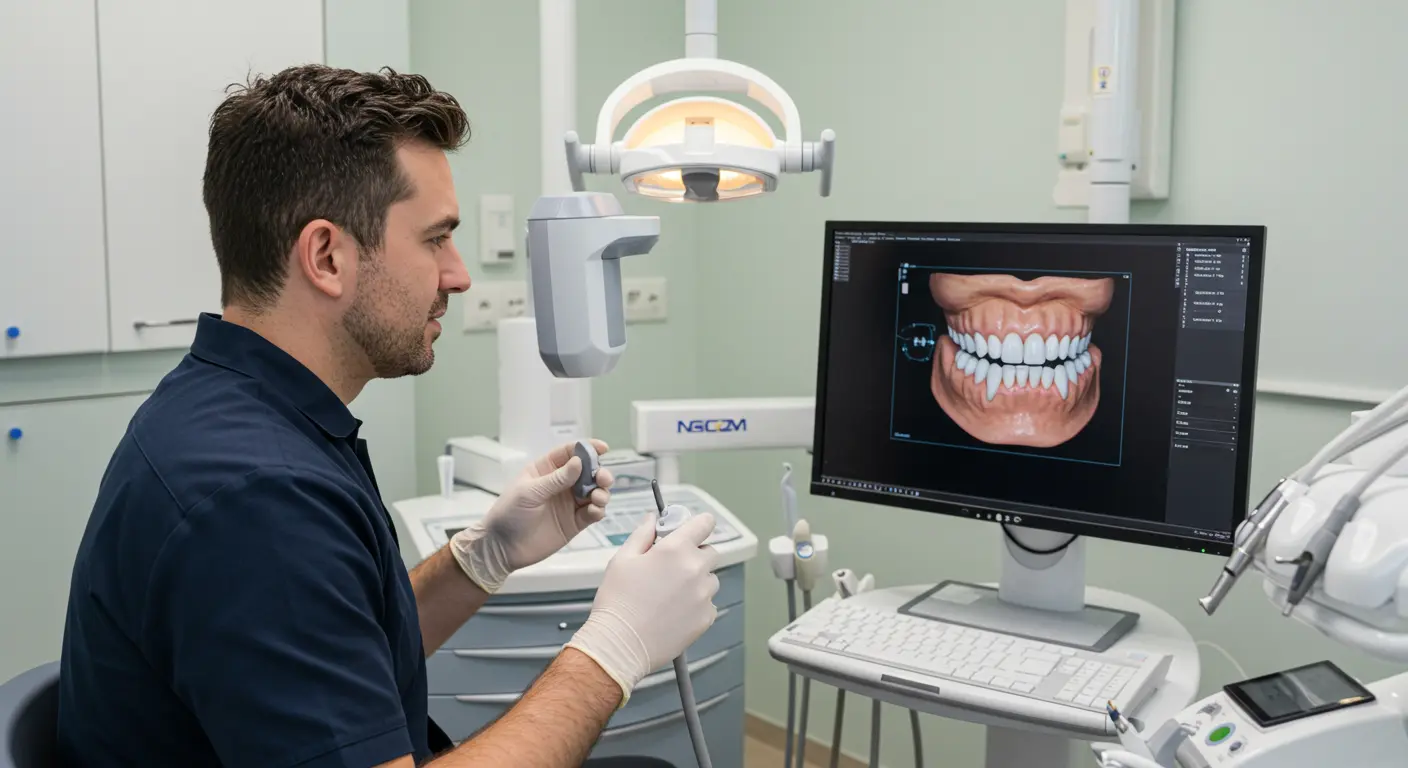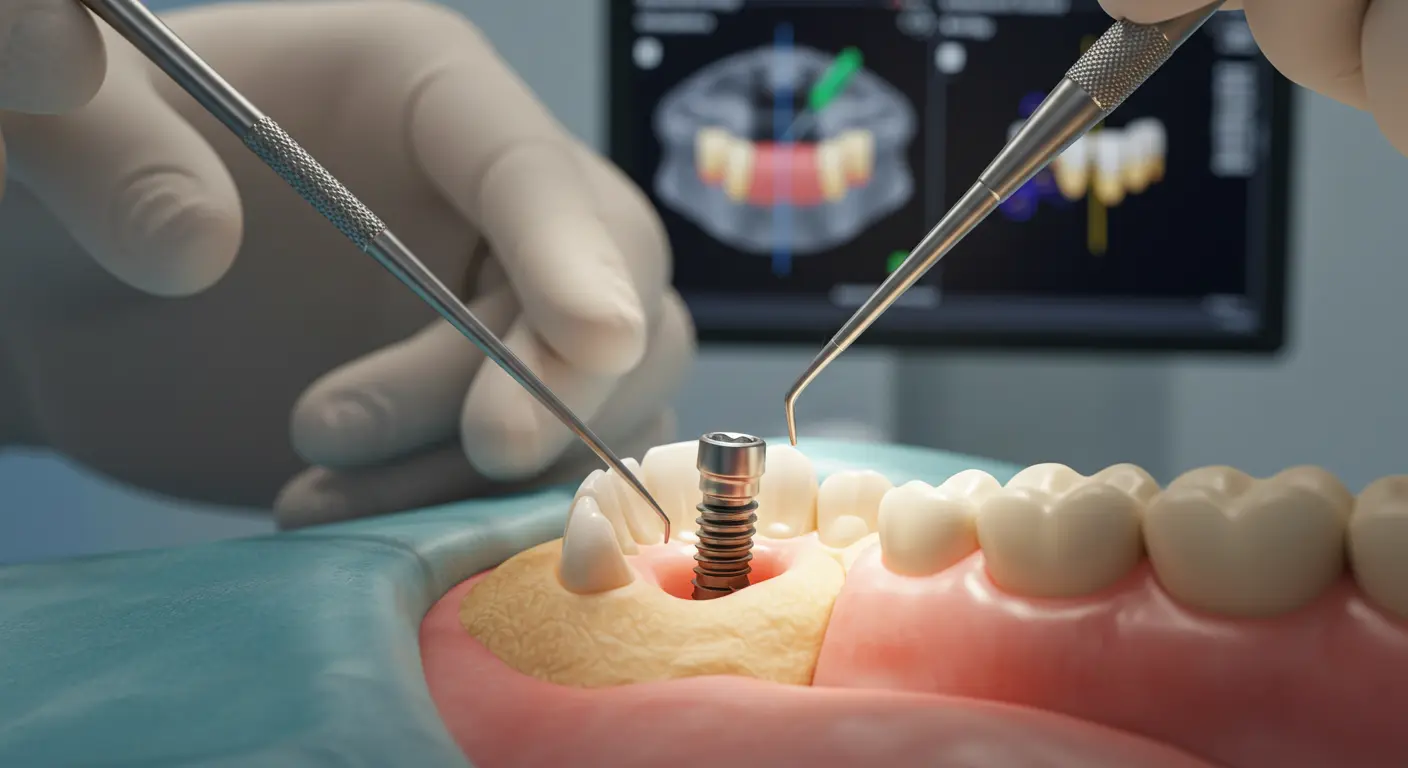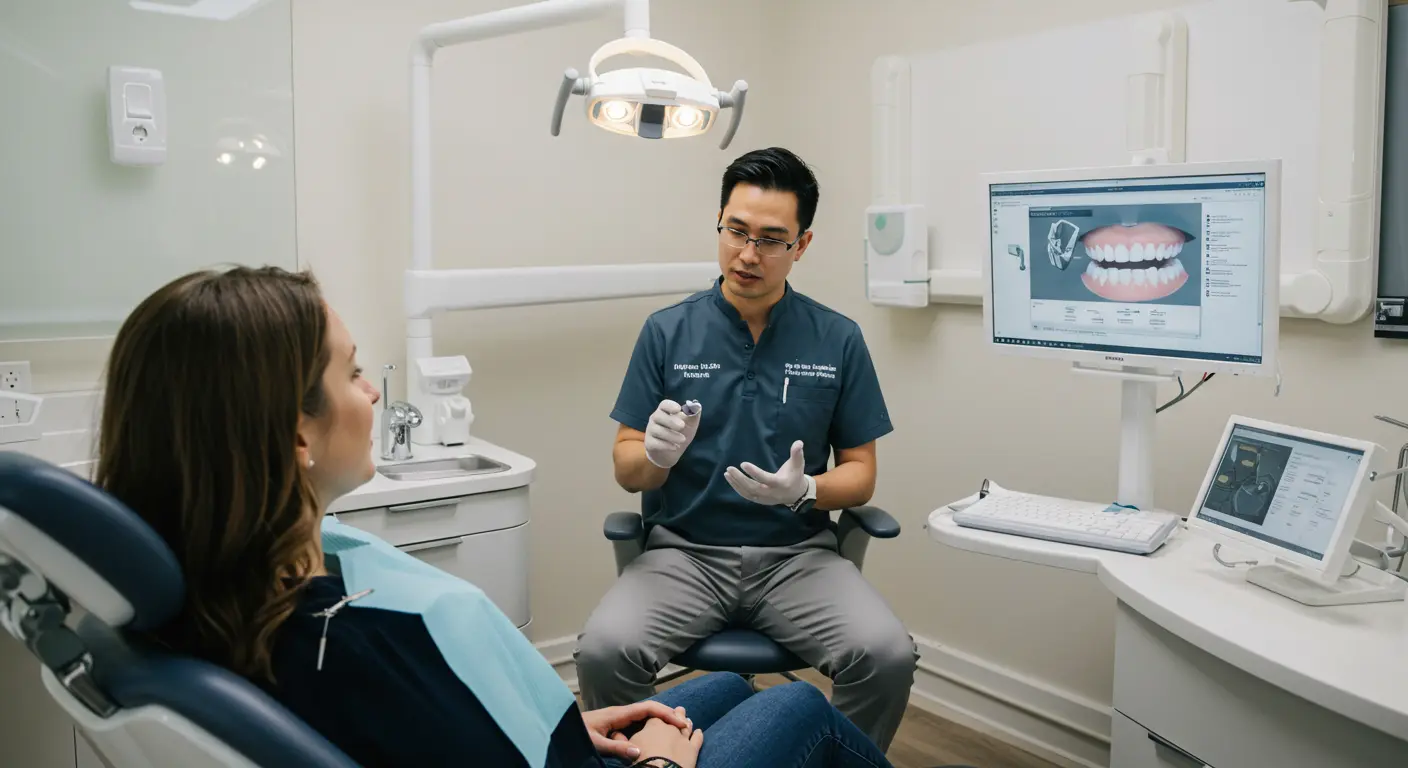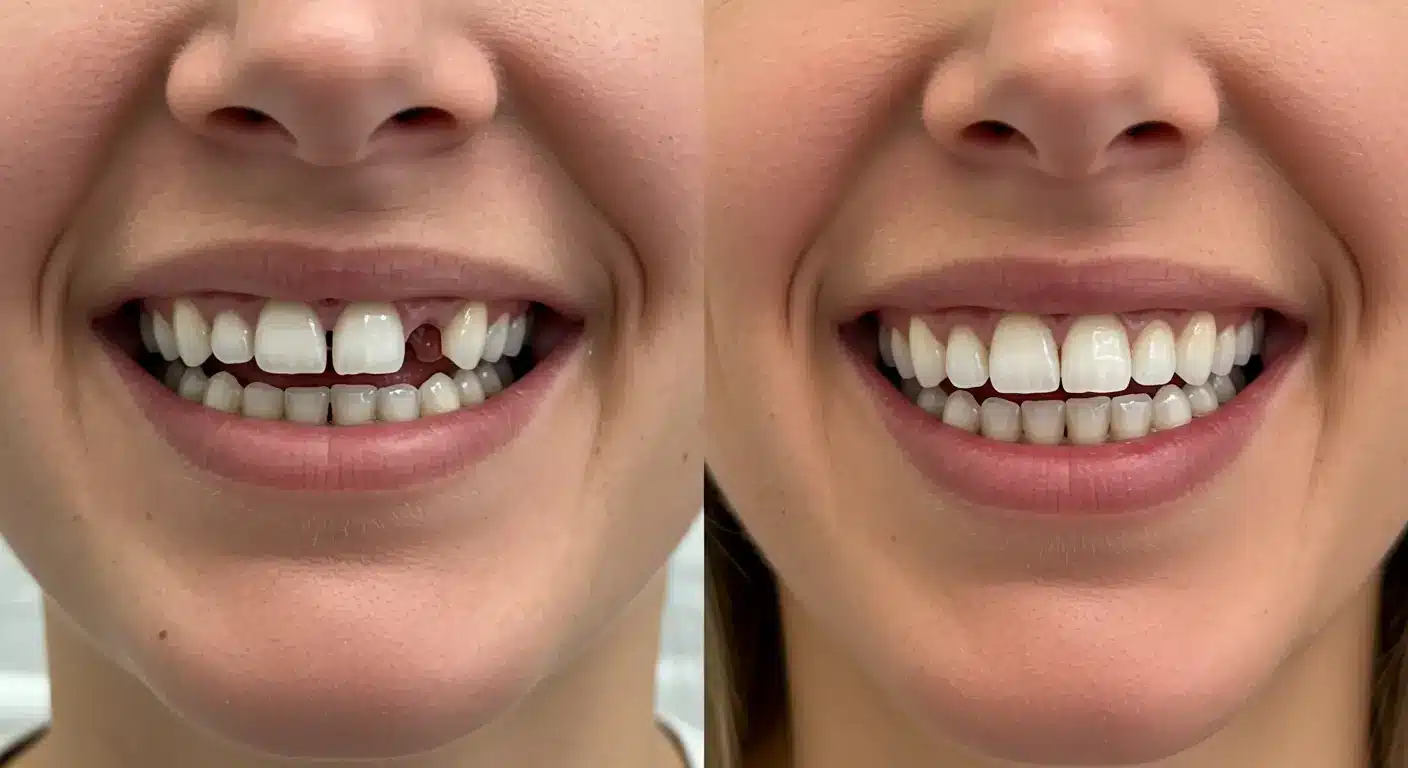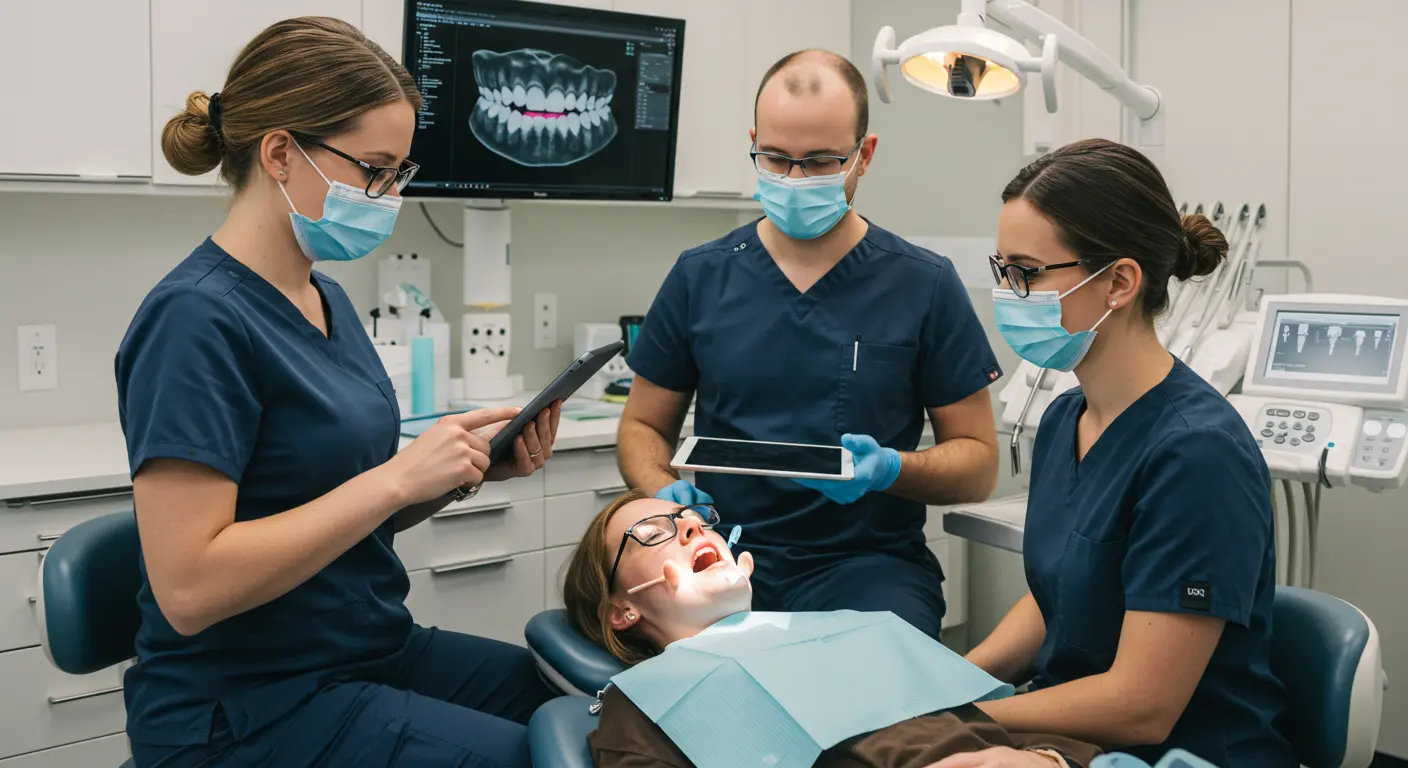Approximately 5 Million Dental Implants Are Placed in the U.S. Each Year: Trends, Innovations, and Patient Benefits
Approximately 5 million dental implants are placed in the U.S. each year—a staggering statistic that highlights the transformative impact of dental implant technology on oral health care. This number reflects not only the growing demand for permanent tooth replacement but also the remarkable advancements in dental implant procedures that have made these solutions more accessible, predictable, and effective. In this comprehensive guide, we will explore the factors behind this impressive statistic, the technological innovations driving the trend, and the benefits that patients enjoy from dental implants. Whether you are a dental professional or a prospective patient, understanding why approximately 5 million dental implants are placed in the U.S. each year can help you appreciate the evolution of modern dentistry and make informed decisions about your oral health.

The Growth of Dental Implantology in the U.S.
The dental implant industry in the United States has experienced exponential growth over the past few decades. Approximately 5 million dental implants are placed in the U.S. each year, a figure that underscores the widespread acceptance of implants as the preferred solution for tooth loss. Several factors contribute to this surge:
- Aging Population: As the population ages, more people experience tooth loss and seek durable, long-term solutions.
- Advancements in Technology: Innovations such as 3D imaging, computer-guided surgery, and digital smile design (DSD) have improved the precision and success rates of implant procedures.
- Improved Materials: The use of biocompatible materials like titanium and zirconia has enhanced implant durability and aesthetics.
- Increased Awareness: Public awareness of the benefits of dental implants over traditional dentures or bridges has grown, leading to higher acceptance rates.
- Patient Demand for Aesthetics and Function: Modern patients are not only seeking functional restoration but also aesthetically pleasing, natural-looking solutions.
These factors have converged to make dental implants the gold standard for tooth replacement, leading to the impressive statistic that approximately 5 million dental implants are placed in the U.S. each year.
Technological Advancements Driving Implant Success
The evolution of dental implant technology has been pivotal in achieving the high success rates observed today. Advanced digital technologies and innovative materials have revolutionized the planning, placement, and restoration of dental implants. Here are some of the key technological advancements:
Digital Planning and 3D Imaging
Digital imaging has transformed implant dentistry. Dentists now use high-resolution 3D scanners and intraoral cameras to create detailed digital models of a patient’s oral anatomy. This technology enables:
- Precise Treatment Planning: Detailed 3D images help determine the optimal implant placement for each patient.
- Customized Implant Placement: Digital planning allows for a personalized approach, ensuring that implants are positioned to achieve both functional and aesthetic goals.
- Minimized Surgical Risks: Computer-guided surgery reduces human error, leading to safer procedures and faster healing times.
Advanced Biomaterials
The development of biocompatible materials has been a game-changer for dental implants:
- Titanium and Titanium Alloys: These materials have long been the standard due to their excellent strength, durability, and compatibility with human bone.
- Zirconia Implants: For patients concerned with metal sensitivity, zirconia offers a strong, natural-looking alternative.
- Surface Treatments: Innovations such as roughening and coating implant surfaces have improved osseointegration, ensuring a stronger bond between the implant and the jawbone.
Minimally Invasive Techniques
Minimally invasive surgical techniques have significantly improved the patient experience:
- Flapless Surgery: By minimizing tissue disruption, flapless procedures reduce pain and shorten recovery times.
- Immediate Loading Protocols: Some implant systems allow for the attachment of temporary restorations on the same day as the implant placement, offering immediate function and aesthetics.
- Laser-Assisted Surgery: The use of lasers reduces bleeding and accelerates healing, further enhancing the overall success of the procedure.
Digital Smile Design (DSD)
Digital Smile Design (DSD) is an innovative tool that allows patients to visualize their future smile before the procedure begins:
- Enhanced Communication: DSD helps bridge the gap between patient expectations and clinical outcomes.
- Customized Aesthetics: By simulating the final result, DSD enables the creation of restorations that perfectly complement the patient’s facial features.
- Increased Patient Confidence: When patients see a digital mockup of their new smile, they are more confident in the procedure and more likely to achieve satisfaction with the results.

The Impact of Dental Implants on Patient Outcomes
The widespread adoption of dental implants has led to significant improvements in both functional and aesthetic outcomes for patients. Here are some of the major benefits:
Restored Functionality
Dental implants function like natural teeth, allowing patients to chew, speak, and smile with confidence. Unlike removable dentures, implants provide:
- Stability: They are permanently anchored into the jawbone.
- Improved Chewing Efficiency: Patients can enjoy a broader range of foods without the discomfort or slippage associated with dentures.
- Enhanced Speech: A fixed implant restoration improves speech clarity, boosting overall confidence.
Preservation of Jawbone and Facial Structure
One of the key advantages of dental implants is their ability to preserve the jawbone:
- Osseointegration: Implants stimulate the jawbone, preventing the bone loss that typically occurs after tooth extraction.
- Maintaining Facial Aesthetics: By preserving bone volume, implants help maintain the natural contours of the face, preventing a sunken or aged appearance.
Superior Aesthetics
Modern dental implants offer aesthetic results that are nearly indistinguishable from natural teeth:
- Customized Restorations: Through digital planning and advanced biomaterials, restorations are tailored to match the patient’s natural tooth color, shape, and size.
- Long-Term Durability: With proper care, implants can last a lifetime, ensuring that the aesthetic benefits are preserved over the long term.
Enhanced Patient Satisfaction
Patient satisfaction is a critical metric in the success of dental treatments. The high success rates and predictability of dental implants have led to:
- Increased Confidence: Patients experience a significant boost in self-esteem after receiving implants.
- Improved Quality of Life: Restored function and aesthetics lead to better social interactions and overall well-being.
- High Acceptance Rates: The reliability and longevity of implants have resulted in a steady increase in the number of dental implant procedures performed annually—approximately 5 million dental implants are placed in the U.S. each year.
Addressing Common Challenges and Concerns
Despite their many advantages, dental implants are not without challenges, particularly for patients with certain risk factors. Addressing these concerns is crucial for achieving optimal outcomes.
Bone Loss and Density
- Challenge: Many patients, especially older adults, suffer from reduced bone density, which can complicate implant placement.
- Solution: Advanced imaging and digital planning enable dentists to accurately assess bone quality and select the appropriate implant type. In some cases, bone grafting or alternative implant designs (such as short implants) may be necessary.
Surgical Risks and Recovery
- Challenge: Implant surgery is an invasive procedure that carries inherent risks, such as infection, nerve damage, or implant failure.
- Solution: Minimally invasive techniques, digital planning, and rigorous post-operative care have significantly reduced these risks. Proper patient evaluation and adherence to strict sterilization protocols are essential for minimizing complications.
Cost Considerations
- Challenge: Dental implants can be costly, and the initial investment may be a barrier for some patients.
- Solution: Although the upfront cost is higher than traditional restorative options, implants offer long-term value by providing a permanent solution that avoids the need for frequent replacements. Moreover, advances in technology and streamlined treatment protocols are gradually reducing the overall cost.

Future Trends in Dental Implant Technology
The future of dental implantology is driven by continuous innovation, with several emerging trends poised to further enhance the success and accessibility of dental implants:
Smart Implants
The development of smart implants equipped with sensors that monitor osseointegration and detect early signs of complications is an exciting frontier. These implants could revolutionize post-operative care by providing real-time data, allowing for immediate intervention if issues arise.
Regenerative Biomaterials
Research into regenerative biomaterials continues to advance, with new substances that not only replace lost bone but also stimulate natural bone growth. These materials promise to improve implant stability and reduce healing times, even in patients with compromised bone conditions.
AI-Driven Treatment Planning
Artificial Intelligence (AI) is making its way into dental implantology by enhancing digital planning and treatment customization. AI-driven systems can analyze patient data to create more precise and individualized treatment plans, further improving the predictability and success rates of implant procedures.
Enhanced Digital Workflows
The integration of digital technologies such as 3D printing and computer-guided surgery is streamlining the entire implant process. These advancements allow for faster, more accurate procedures, reducing treatment time and improving patient outcomes.
Comparative Analysis: Dental Implants vs. Alternative Restorations
To fully appreciate the benefits of dental implants, it is useful to compare them with other restorative options, such as bridges and dentures. Consider the following comparative analysis:
| Factor | Dental Implants | Bridges | Dentures |
|---|---|---|---|
| Stability | Fixed and anchored in bone | Supported by adjacent teeth; less stable | Removable; may slip and cause discomfort |
| Functionality | Mimics natural teeth, optimal for chewing and speech | Provides good function but may require adjustments | Can impair chewing and speech if poorly fitted |
| Aesthetics | Natural appearance; customizable restorations | Aesthetic but may require maintenance | Often less natural-looking and bulky |
| Bone Preservation | Stimulates bone growth and preserves jaw structure | Does not prevent bone loss; may accelerate resorption | Can lead to further bone loss over time |
| Longevity | Potentially a lifetime with proper care | Typically lasts 5-15 years | Requires regular replacement and adjustments |
| Maintenance | Low maintenance once integrated | Requires periodic cleaning of abutments | Demands frequent adjustments and cleaning |
This table illustrates that dental implants not only offer superior stability and functionality but also play a critical role in preserving the jawbone and enhancing long-term oral health. These benefits contribute significantly to the statistic that approximately 5 million dental implants are placed in the U.S. each year.
Real-World Success Stories
Case Study 1: A Young Professional’s Transformation
Emma, a 32-year-old professional, suffered from tooth loss due to an accident. After extensive consultation and digital planning, she received dental implants that restored both her function and aesthetics. With minimally invasive surgery and a custom treatment plan, Emma’s implants integrated seamlessly, and her confidence soared. Her story is a testament to how advanced implant technology and personalized care can transform lives.
Case Study 2: Restoring Function in an Older Patient
John, a 60-year-old patient with a history of periodontal disease, was initially concerned about the possibility of dental implants. However, after a thorough evaluation and digital imaging, John received implants that not only restored his smile but also preserved his jawbone. The success of his treatment—coupled with reduced recovery time and improved functionality—demonstrated the long-term benefits of choosing dental implants over traditional restorations.
Patient Testimonials
- “I was amazed at how quickly my implant integrated. My dentist used advanced digital planning, and now I have a smile that feels completely natural.” – Sarah, 45
- “Dental implants changed my life. The procedure was fast, and the results are long-lasting. I can now enjoy my favorite foods again.” – Michael, 55

The Role of Patient Experience in Implant Success
The patient experience plays a crucial role in the overall success of dental implants. A positive experience is achieved through:
- Clear Communication: Detailed consultations and digital visualizations help patients understand the procedure and set realistic expectations.
- Personalized Treatment Plans: Customization ensures that the implant is tailored to the patient’s unique anatomy and lifestyle.
- Minimally Invasive Techniques: Reducing surgical trauma not only speeds up recovery but also enhances patient satisfaction.
- Ongoing Support: Regular follow-up appointments and comprehensive post-operative care contribute to a smooth healing process and long-term success.
Best Practices for Dental Implant Success
To ensure the highest success rates for dental implants, dental professionals must adhere to best practices at every stage of the treatment process.
Pre-Operative Preparation
- Comprehensive Evaluation:
- Detailed medical and dental history.
- High-resolution digital imaging and 3D scans to assess bone quality.
- Risk assessment for potential complications.
- Customized Treatment Planning:
- Use Digital Smile Design (DSD) to visualize outcomes.
- Develop a tailored plan that aligns with the patient’s unique needs and expectations.
- Patient Education:
- Provide clear, concise information about the implant procedure and post-operative care.
- Address any concerns to reduce anxiety and ensure informed consent.
Intra-Operative Techniques
- Computer-Guided Surgery:
- Utilize digital planning tools to ensure precise implant placement.
- Implement minimally invasive techniques to reduce tissue trauma.
- Effective Pain Management:
- Use local anesthesia and, if necessary, sedation to ensure a comfortable experience.
- Sterile Environment:
- Adhere to strict sterilization protocols to minimize the risk of infection.
Post-Operative Care
- Strict Oral Hygiene:
- Instruct patients on proper brushing, flossing, and rinsing techniques.
- Recommend antibacterial mouthwashes to maintain a clean implant site.
- Regular Follow-Up Appointments:
- Monitor the healing process closely.
- Address any complications early to ensure long-term success.
- Lifestyle Recommendations:
- Advise patients on dietary adjustments and habits that support implant longevity.
- Encourage smoking cessation and stress management as part of overall oral health.
Future Trends in Dental Implant Technology
The field of dental implantology is continuously evolving, with research and technological advancements pushing the boundaries of what is possible. Future trends include:
Smart Implants
Emerging smart implants equipped with sensors can monitor bone integration in real time and alert dentists to potential complications before they become critical.
Regenerative Materials
New biomaterials that actively promote bone regeneration are being developed. These materials not only replace lost bone but also stimulate the growth of new bone tissue, ensuring a stronger, more stable foundation for implants.
AI-Driven Treatment Planning
Artificial intelligence is poised to revolutionize dental implant procedures by analyzing patient data to create highly personalized treatment plans. AI can predict the optimal implant placement and customize protocols to further reduce healing times and complications.
Enhanced Digital Workflows
Continued improvements in digital imaging, 3D printing, and computer-guided surgery will streamline implant procedures even further. These advancements will enable even more precise placement of implants, leading to higher success rates and improved patient outcomes.
Comparative Analysis: Dental Implants and Other Restorative Options
While dental implants offer a permanent solution for tooth loss, other restorative options such as bridges and dentures remain available. However, the benefits of dental implants are unmatched in terms of stability, aesthetics, and bone preservation.
| Aspect | Dental Implants | Bridges | Dentures |
|---|---|---|---|
| Stability | Fixed and integrated with bone; highly stable | Supported by adjacent teeth; less stable | Removable; may shift during use |
| Functionality | Mimics natural teeth for optimal chewing and speech | Provides good function but may require adjustments | Can impair chewing and speech if ill-fitted |
| Aesthetics | Natural, seamless appearance; customizable | Aesthetic but may require periodic replacement | Often less natural-looking and may appear bulky |
| Bone Preservation | Stimulates bone growth and prevents resorption | Does not prevent bone loss; may accelerate resorption | Leads to further bone loss over time |
| Longevity | Potentially a lifetime with proper care | Lasts 5-15 years | Requires regular replacement |
This analysis reinforces the value of dental implants as the optimal solution for long-term oral health and aesthetic restoration.
The Economic and Societal Impact of Dental Implants
Approximately 5 million dental implants are placed in the U.S. each year, reflecting not only the clinical success of implant technology but also its economic and societal impact. Dental implants:
- Boost Overall Quality of Life: Restoring the ability to chew, speak, and smile naturally has profound effects on daily living.
- Reduce Long-Term Healthcare Costs: By preserving the jawbone and preventing further oral deterioration, implants help avoid costly future treatments.
- Drive Technological Innovation: The high demand for dental implants spurs continuous research and development, leading to even better outcomes for patients.
The widespread adoption of dental implants is a testament to the trust and reliability placed in this treatment modality, which continues to evolve through the integration of advanced digital technology and personalized care.
Addressing Patient Concerns and Misconceptions
Despite their proven benefits, some patients remain hesitant about dental implants. Common concerns include:
Is the Procedure Painful?
Modern techniques, including minimally invasive surgery and effective pain management, have drastically reduced the discomfort associated with dental implant procedures. Local anesthesia and sedation options ensure that patients experience minimal pain during and after surgery.
How Long Does Healing Take?
With traditional methods, healing could take up to 12 months. However, with advancements in digital planning and implant design, many patients now see satisfactory integration within 3-6 months.
Are Dental Implants Expensive?
While the initial investment may be higher than other restorative options, dental implants offer long-term value and durability. They eliminate the need for frequent replacements and adjustments, ultimately saving patients time and money.
What if I Have Concerns About My Oral Health?
A comprehensive pre-operative evaluation and personalized treatment plan are essential. Patients are encouraged to discuss any concerns with their dentist, who can tailor the procedure to ensure optimal outcomes.
The Role of Patient Education and Experience
Educating patients about the process and benefits of dental implants is key to their overall satisfaction. When patients understand that approximately 5 million dental implants are placed in the U.S. each year, they gain confidence in the treatment’s success and safety. Effective communication, digital visualizations, and personalized consultations help demystify the procedure and set realistic expectations.
- Pre-Treatment Education: Patients should receive detailed information about the implant process, including potential risks, benefits, and post-operative care.
- Interactive Digital Tools: Tools such as Digital Smile Design (DSD) allow patients to see a 3D preview of their future smile, which can significantly reduce anxiety.
- Continuous Support: Post-operative follow-ups and clear care instructions ensure that patients remain well-informed and comfortable throughout their recovery.
Future Directions in Dental Implant Technology
The future of dental implantology looks promising, driven by continuous innovation and technological advancements. Emerging trends include:
- Smart Implants: Implants equipped with sensors that monitor healing in real time will provide early warnings of complications.
- Regenerative Materials: New biomaterials that promote natural bone regeneration will further enhance implant stability and success.
- AI-Driven Personalization: Artificial intelligence will enable even more precise treatment planning, tailored to the unique anatomical and physiological characteristics of each patient.
- Enhanced Digital Integration: Improvements in digital imaging, 3D printing, and computer-guided surgery will make implant procedures faster, safer, and more effective.
These advancements promise to further improve patient outcomes, reduce recovery times, and enhance the overall efficiency of dental implant procedures, reinforcing the significance of the statistic that approximately 5 million dental implants are placed in the U.S. each year.
Conclusion
Approximately 5 million dental implants are placed in the U.S. each year, and this impressive figure is a testament to the transformative power of dental implant technology. Dental implants not only restore function and aesthetics but also preserve the jawbone and improve quality of life. The integration of digital planning, minimally invasive techniques, and personalized treatment plans ensures that implants are a reliable, long-lasting solution for tooth loss.
For patients seeking a permanent, natural-looking solution, dental implants offer unmatched benefits over traditional restorative methods. With the continuous evolution of technology and patient-centered care, the future of dental implantology is bright. Whether you are considering implants for functional restoration or aesthetic enhancement, understanding these advanced techniques can help you achieve a healthier, more confident smile.
Are you ready to experience the benefits of dental implants? Contact Smile Design NJ in Westfield, NJ, today to schedule a personalized consultation. Our expert team is committed to providing state-of-the-art care, from digital planning to minimally invasive surgery, ensuring that your smile is restored to its full potential. Your journey to a radiant, confident smile starts now!


